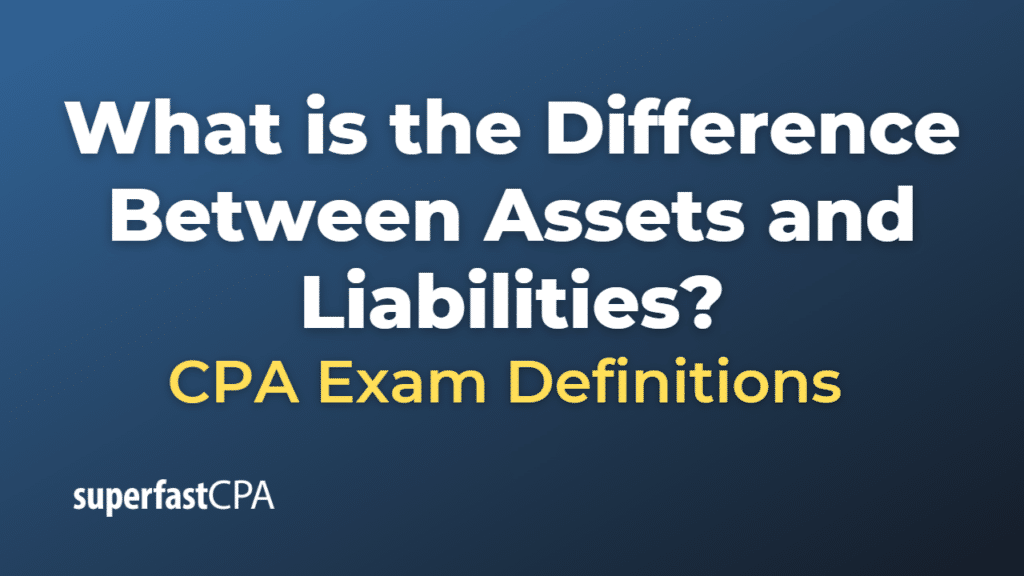Difference Between Assets and Liabilities
Assets and liabilities are two fundamental concepts in accounting and finance, representing two sides of a company’s balance sheet. They’re different in what they represent for a business:
Assets: As mentioned earlier, an asset is a resource with economic value that an individual, corporation, or country owns or controls with the expectation that it will provide a future benefit. Assets can be physical or intangible and are used to produce goods or services, generate revenue, or be sold for profit. Examples of assets include cash, accounts receivable, inventory, property, equipment, and investments.
Liabilities: On the other hand, a liability is an obligation or debt a company owes to outside parties (creditors, individuals, other companies or institutions) due to past transactions or events. Like assets, liabilities are divided into two categories: current liabilities and non-current liabilities.
- Current liabilities are short-term obligations that are due within one year. These include accounts payable, short-term loans, and accrued expenses.
- Non-current liabilities, also known as long-term liabilities, are debts or obligations due in one year or more. These can include bonds payable, long-term loans, deferred tax liabilities, and pension obligations.
The relationship between assets and liabilities is expressed in the basic accounting equation: Assets = Liabilities + Equity. This equation shows that what a company owns (assets) is purchased by either borrowing (liabilities) or getting it from investors (equity, also known as shareholders’ equity).
Example of the Difference Between Assets and Liabilities
Using the same bakery example, let’s look at how assets and liabilities might be represented in this small business:
Assets:
- Current Assets:
- Cash in your bank account: $5,000
- Accounts receivable (money owed to you by customers): $2,000
- Inventory (flour, sugar, baking ingredients, packaging materials): $3,000
- Non-Current Assets:
- Fixed Assets:
- Bakery Equipment (ovens, mixers, refrigerators): $25,000
- Building (if you own it): $200,000
- Intangible Assets:
- Trademark of your bakery’s brand name: $10,000
- Fixed Assets:
Total Assets = $245,000
Liabilities:
- Current Liabilities:
- Accounts Payable (money you owe to suppliers): $2,500
- Short-term Loan (due within the next 12 months): $5,000
- Non-Current Liabilities:
- Long-term Loan (due in more than 12 months): $100,000
Total Liabilities = $107,500
The difference between your assets and liabilities is your equity, or the amount of money that belongs to you as the owner. This can be calculated using the basic accounting equation:
Equity = Assets – Liabilities
So in this case, your equity in the bakery would be $245,000 (assets) – $107,500 (liabilities) = $137,500. This represents your net worth in the business. If you were to sell all your assets and pay off all your liabilities, you would be left with $137,500.













